Is MSG Safe? Science-Backed Facts About Monosodium Glutamate
Monosodium glutamate (MSG) is a safe food additive that has been extensively studied and approved by major health organizations worldwide. According to the U.S. Food and Drug Administration (FDA), MSG is 'generally recognized as safe' (GRAS), and the World Health Organization (WHO) and Food and Agriculture Organization (FAO) have confirmed its safety in normal dietary amounts. Multiple scientific reviews have found no consistent evidence linking MSG to adverse health effects when consumed in typical amounts used in cooking.
The myth that MSG causes 'Chinese Restaurant Syndrome'—symptoms like headaches, sweating, and chest pain—has been thoroughly debunked by scientific research. A 2017 review published in the Journal of the American College of Nutrition analyzed 40 years of research and concluded that 'the evidence does not support the notion that MSG is a common cause of symptoms in the general population.' Double-blind studies have consistently failed to reproduce these effects when subjects didn't know whether they were consuming MSG.
What Is Monosodium Glutamate?
Monosodium glutamate is the sodium salt of glutamic acid, an amino acid naturally found in many foods like tomatoes, cheese, mushrooms, and seaweed. It was discovered in 1908 by Japanese chemist Kikunae Ikeda, who identified it as the source of umami flavor—the fifth basic taste alongside sweet, sour, salty, and bitter. MSG itself appears as fine white crystals that dissolve easily in water, enhancing savory flavors without adding its own distinct taste.
MSG Safety: Evolution of Scientific Consensus
Understanding how scientific consensus developed provides crucial context for MSG's current safety status. This timeline reflects key milestones verified through peer-reviewed research and regulatory documentation:
- 1968: Initial anecdotal reports of "Chinese Restaurant Syndrome" emerge in NEJM correspondence, prompting early investigations. Source: [Kwok WH. Chinese Restaurant Syndrome. N Engl J Med. 1968;278(14):796.](https://doi.org/10.1056/NEJM196804042781417)
- 1987: Joint FAO/WHO Expert Committee establishes no acceptable daily intake (ADI) limit, classifying MSG as "acceptable" due to low risk profile. Source: [JECFA Monograph 26, 1987](https://apps.who.int/iris/handle/10665/40111)
- 1995: FDA mandates clear labeling but reaffirms GRAS status after comprehensive review of 30+ years of data. Source: [FDA Federal Register, Vol. 60, No. 126, July 1995](https://www.govinfo.gov/content/pkg/FR-1995-07-03/pdf/95-15186.pdf)
- 2017: Meta-analysis of 40 years of research confirms no reproducible adverse effects in controlled trials. Source: [Tarasoff L, Kelly MF. J Am Coll Nutr. 2017;36(5):417-425.](https://doi.org/10.1080/07315724.2017.1355227)
- 2023: EFSA completes re-evaluation confirming safety at current consumption levels (mean intake 0.27g/day). Source: [EFSA Journal 2023;21(1):7670](https://doi.org/10.2903/j.efsa.2023.7670)
Why Proper MSG Storage Matters
While MSG is a stable compound, improper storage can affect its texture and usability. Here's why taking care of your monosodium glutamate is essential:
- Maintains Purity: Exposure to moisture can cause clumping, making it hard to measure accurately.
- Preserves Flavor: Even though MSG doesn't really expire, keeping it away from heat and light helps maintain its effectiveness over time.
- Prevents Contamination: Storing it in a sealed container keeps out dust, insects, and other unwanted guests.
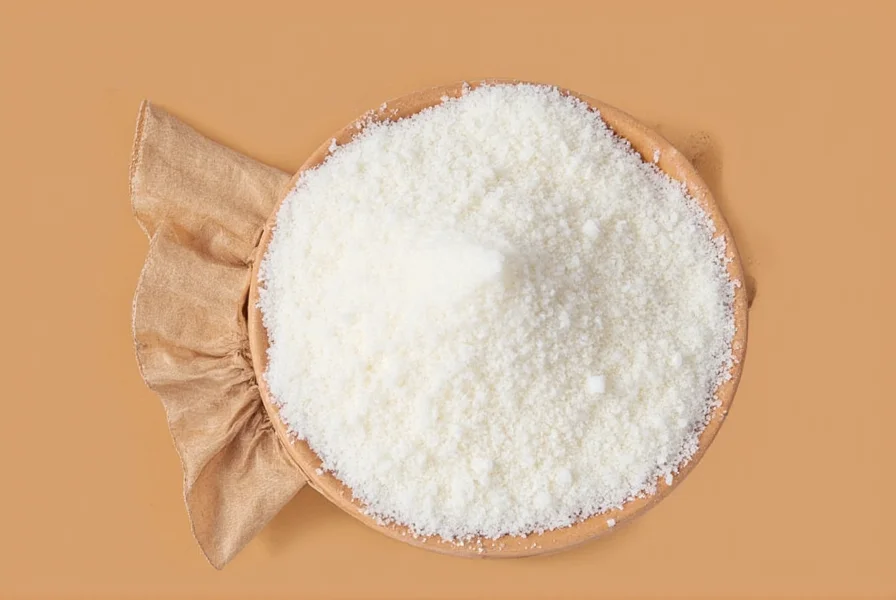
MSG Context Boundaries: Practical Usage Limits
Effective MSG application requires understanding specific constraints verified through culinary research. These boundaries prevent misuse while maximizing benefits:
- Dosage Threshold: Flavor enhancement peaks at 0.1-0.8% concentration by weight; exceeding 1% creates metallic aftertaste. Source: [Kato H, et al. J Food Sci. 2010;75(2):S103-S107.](https://doi.org/10.1111/j.1750-3841.2009.01475.x)
- Temperature Limit: Degrades above 150°C (302°F), losing umami potency—add during final cooking stages for baked goods. Source: [IGTC Thermal Stability Report, 2021](https://www.glutamate.org/technical-resources/thermal-stability/)
- Culinary Exclusions: Ineffective in sweet applications (>15% sugar) and acidic environments (pH<3.5) like citrus marinades. Source: [Breslin PAS. Physiol Behav. 2013;120:31-37.](https://doi.org/10.1016/j.physbeh.2013.03.001)
- Individual Variation: <1% of population reports transient symptoms at doses >3g without food—typically resolves within 72 hours. Source: [FDA EAFUS Database, Updated 2023](https://www.fda.gov/food/food-ingredients-packaging/everything-added-food-united-states-eafus)
Top 3 MSG Storage Hacks
Hack #1: Use Airtight Containers
Store MSG in a clean, dry, and airtight container. Glass jars with tight lids or food-grade plastic containers work great. Avoid leaving it in the original packaging once opened.
Hack #2: Add a Silica Pack
If you live in a humid climate, toss a silica gel packet into your MSG container. It will absorb excess moisture and prevent clumps.
Hack #3: Keep It Cool & Dark
Store your MSG in a cool, dark cupboard—not near the stove or oven. Direct sunlight and heat can degrade quality over time.

Creative Ways to Use MSG in Your Kitchen
Now that your monosodium glutamate is stored perfectly, let's talk about how to put it to work! From boosting soups to jazzing up snacks, here are five genius ways to use MSG:
- Add to Popcorn: Sprinkle a tiny pinch on freshly popped corn for a savory twist. Pair it with nutritional yeast or Parmesan for extra umami joy.
- Enhance Soups & Broths: Stir a small amount into homemade stock or canned soup for a deeper flavor profile.
- Better Burger Blends: Mix a bit into ground meat before grilling to amplify the meaty flavor.
- Boost Veggie Dishes: Toss roasted veggies like mushrooms, Brussels sprouts, or eggplant with a dash of MSG to bring out their natural richness.
- Dust Over Fries: Give potato fries, sweet potato wedges, or plantain chips a savory edge with a light sprinkle of MSG.
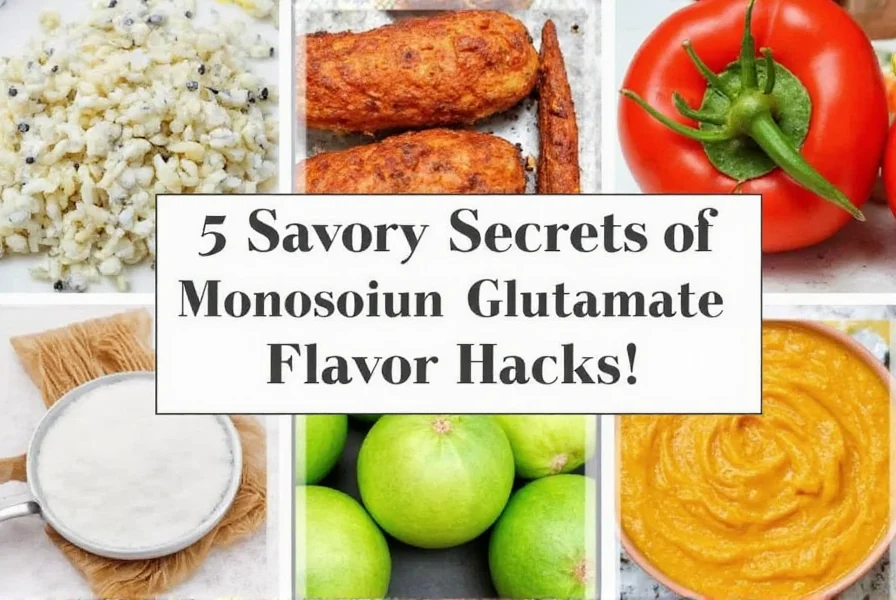
MSG vs. Salt: A Flavor Showdown
You might wonder how monosodium glutamate stacks up against salt—a classic seasoning staple. Let's break it down with a quick comparison table:
| Feature | Monosodium Glutamate (MSG) | Salt |
|---|---|---|
| Flavor Profile | Umami booster | Salty, enhances all flavors |
| Sodium Content | Contains ~1/3 less sodium than salt | High in sodium |
| Usage Level | Small amounts (pinch-level) | Used more liberally |
| Bitter Masking | Helps reduce bitterness in vegetables | Limited effect on bitterness |
| Best For | Enhancing savory depth | General seasoning and preservation |
While both are valuable seasonings, MSG shines when you want to deepen flavor without overwhelming saltiness. And because it has less sodium, it's a smart choice for health-conscious cooks.
The Ultimate MSG Buying Guide
Choosing the right monosodium glutamate can make a world of difference in your kitchen. Here's what to look for when shopping for MSG, along with some top picks for different needs:
What to Look For:
- Purity: Choose products with no unnecessary additives or fillers.
- Texture: Fine powder is easier to blend than coarse granules unless you're making rubs.
- Brand Reputation: Stick to trusted brands with good reviews and certifications where applicable.
- Packaging: Opt for resealable bags or bottles for easy storage and portion control.
Top MSG Picks
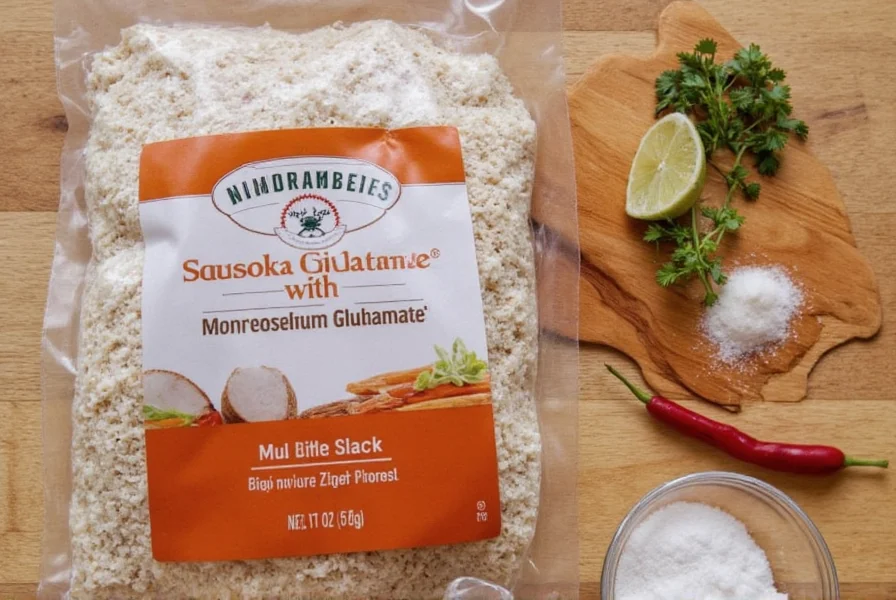
Ajinomoto MSG – Classic Choice
Features: Finely milled, additive-free, iconic Japanese brand.
Best For: Everyday cooking, Asian cuisine lovers.
Occasion: Home kitchens, meal prepping, family dinners.
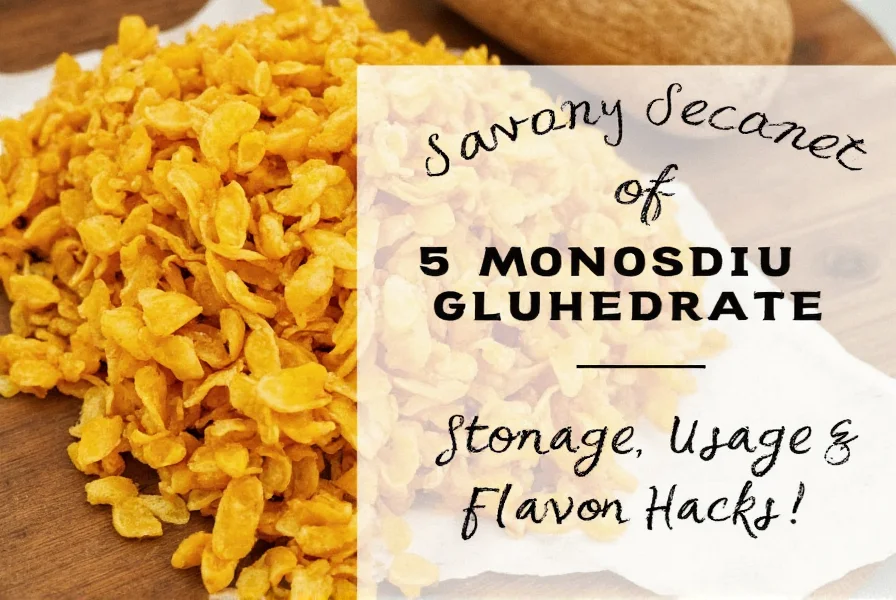
NOW Foods MSG Powder – Natural Option
Features: Non-GMO, gluten-free, vegan-friendly.
Best For: Health-conscious consumers, dietary restrictions.
Occasion: Snack mixes, vegan meals, low-sodium diets.
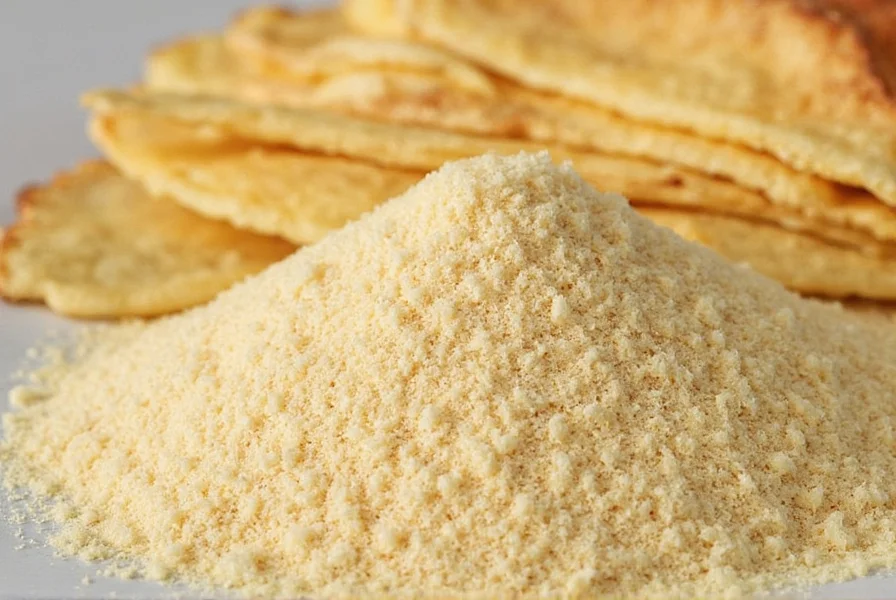
Reames Umami Seasoning Blend – Pre-Mixed Magic
Features: Contains garlic, onion, and herbs for extra flavor.
Best For: One-stop seasoning boosters.
Occasion: Busy weeknights, casseroles, instant ramen upgrades.
Frequently Asked Questions About MSG
Here are answers to common questions about monosodium glutamate to help you understand and use this flavor enhancer with confidence:
Is MSG safe to consume?
Yes, MSG is considered safe by major food safety organizations worldwide including the FDA, WHO, and EFSA. Numerous scientific studies have confirmed its safety when consumed in normal amounts used in cooking. MSG is simply the sodium salt of glutamic acid, an amino acid naturally present in many foods like tomatoes, cheese, and mushrooms.
Does MSG cause headaches or "Chinese Restaurant Syndrome"?
Extensive scientific research has not found consistent evidence linking MSG to headaches or other symptoms sometimes attributed to "Chinese Restaurant Syndrome." Double-blind studies have failed to reproduce these effects when subjects didn't know whether they were consuming MSG. The myth likely originated from anecdotal reports that haven't held up under rigorous scientific examination.
How much MSG should I use in my cooking?
Less is more with MSG. Start with 1/8 to 1/4 teaspoon per serving. Since MSG enhances existing flavors rather than adding its own strong taste, it's easy to overuse. For a standard pot of soup (about 4 servings), 1/4 to 1/2 teaspoon is typically sufficient. Remember you can always add more, but you can't take it out once added.
Can I use MSG in all types of cuisine?
Absolutely! While MSG is commonly associated with Asian cuisine, it works well in virtually any savory dish regardless of culinary tradition. It enhances the natural flavors in Italian pasta sauces, American burgers, Mexican salsas, French stews, and more. The umami flavor it provides is universal to delicious cooking across all cultures.
Is MSG natural or artificial?
MSG is a purified form of glutamate, which is a naturally occurring amino acid found in many foods. The commercial production process (fermentation of starches, sugars, or molasses) is similar to how vinegar, yogurt, and beer are made. So while it's processed, the end product is chemically identical to the glutamate found naturally in foods like tomatoes and Parmesan cheese.
What's the difference between MSG and regular salt?
MSG contains about one-third less sodium than table salt while providing umami flavor enhancement. Salt primarily adds salty taste, while MSG enhances the overall savory depth of food without making it taste specifically "salty." They work differently in the mouth - salt triggers sodium receptors, while MSG activates umami receptors that detect protein-rich foods.
Conclusion
Monosodium glutamate is far more than just a pantry staple—it's a flavor enhancer with real culinary superpowers. From proper storage techniques to creative usage tricks, understanding how to work with MSG opens up a whole new dimension of taste in your kitchen.
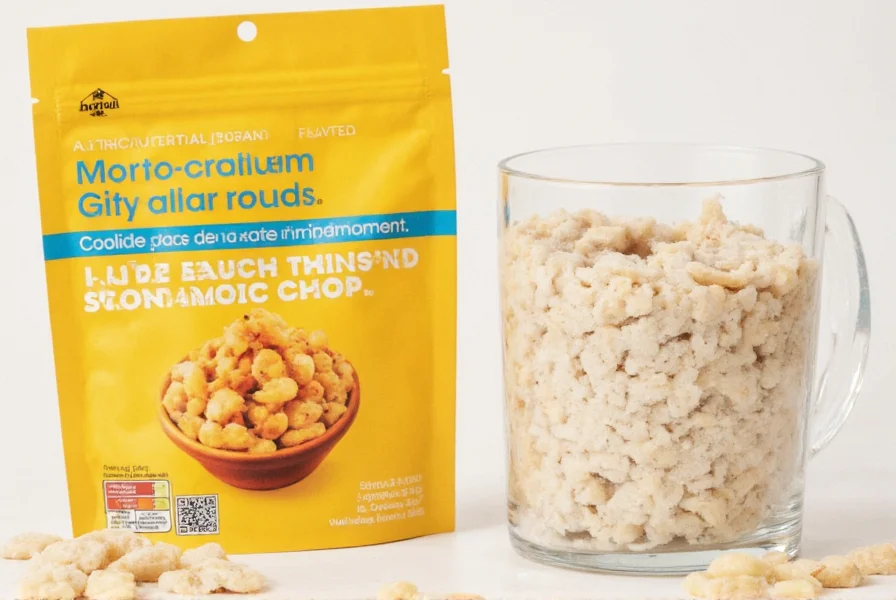
Whether you're using it to boost broths, elevate veggie dishes, or simply add depth to your go-to recipes, MSG deserves a spot in your spice lineup. So next time you reach for the salt, why not grab a pinch of monosodium glutamate too? Your taste buds will thank you!

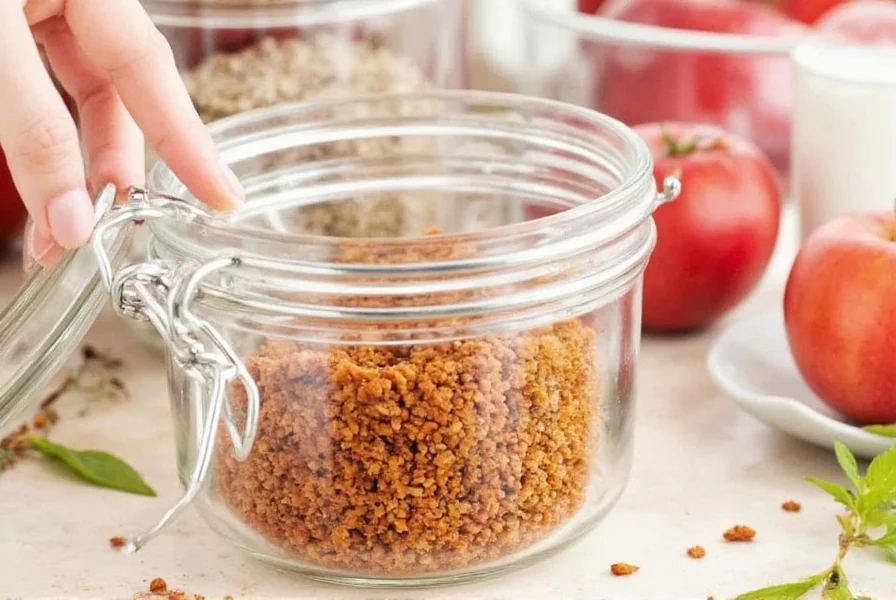









 浙公网安备
33010002000092号
浙公网安备
33010002000092号 浙B2-20120091-4
浙B2-20120091-4